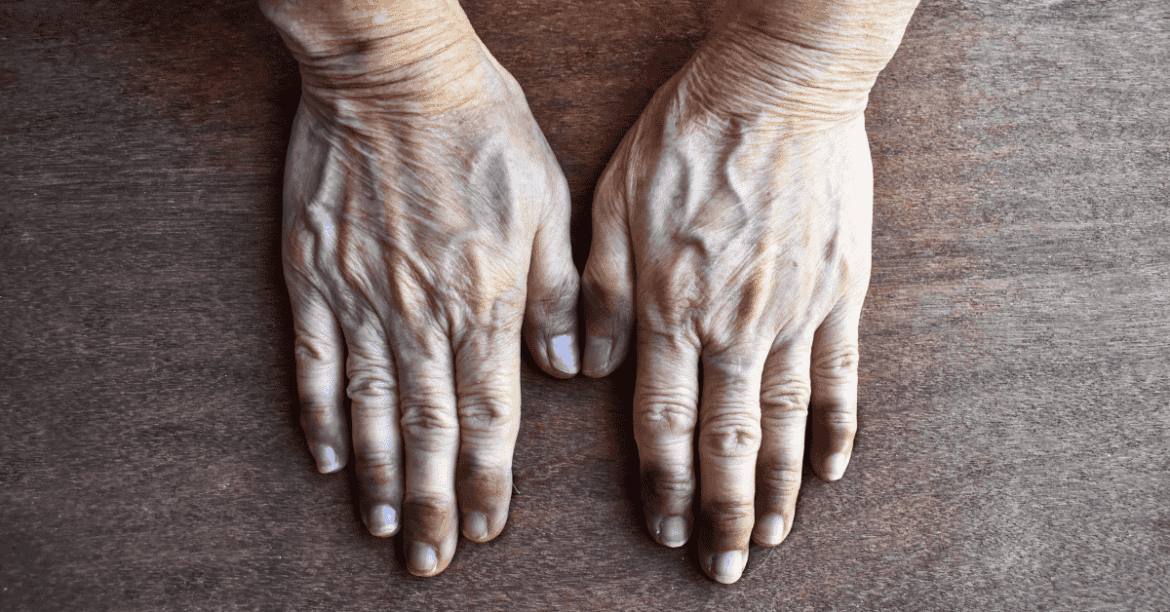Have you ever noticed that your elderly loved ones’ fingertips sometimes turn a dark purple or blue? This condition is called cyanosis, and it mostly happens due to a lack of oxygen supply in the blood. While it can be alarming to see, this condition is rarely dangerous. However, underlying health issues may complicate the situation for the elderly.
Today’s blog post will discuss what causes purple fingertips in the elderly, their types, and some tips to prevent it. By understanding the underlying causes of this symptom, you can provide the best possible care for your senior loved one. So read on for more information!
What Does Purple Fingertips Mean?
Sometimes, you will notice a person’s fingers, lips, fingernails, etc., turning blueish, purple. This is called purple fingertips syndrome, which is also known as Cyanosis. It causes blue or purplish discoloration of the skin. It is a condition in which the extremities, such as the hands and feet, become pale or blue, most commonly because of lower oxygen levels in the blood. Though it is not inoperable, if not treated promptly, cyanosis can become life-threatening too.
What Are the Types of Cyanosis in the Elderly?
There are two main types of cyanosis or purple fingertips syndrome in the elderly – central and peripheral. Let’s have a look at their nature and differences.
Central cyanosis
Central cyanosis is a medical condition with an accumulation of deoxygenated hemoglobin in the blood vessels near the center of the body. It can cause a purple-ish discoloration of the skin and mucous membranes, most notably the lips and tongue. Central cyanosis is often a sign of a serious underlying illness, such as heart failure or respiratory distress syndrome.
Peripheral cyanosis
On the other hand, peripheral cyanosis is the presence of blue discoloration in the extremities, like hands and feet, and not around the mucous membranes. It is typically due to cold exposure, low oxygen levels in the air, or low blood pressure. Typically, peripheral cyanosis is not an indication of a serious medical condition.
Causes of Purple Fingertips in the Elderly
As we know, the main reason for fingertips turning purple is a lack of oxygen supply in the blood. However, some other contributing factors can cause cyanosis in the elderly.
1. Heart disease
There are many potential causes of purple fingertips in the elderly, one of which is heart disease. When the heart isn’t functioning properly, it can’t pump blood as effectively. As a result, it can cause blood to come back up and pool in the veins near the skin’s surface. That can lead to discoloration, including a purplish hue, in the fingers and toes.
2. Respiratory problems
One common cause of purple fingertips in the elderly is respiratory problems such as asthma. Older people tend to have fragile immune systems and are more susceptible to respiratory infections, leading to inflammation and blood clotting in the small blood vessels near the skin’s surface.
3. Blood circulation issues
Blood circulation issues can cause purple fingertips in the elderly due to factors such as artery blockages, narrowed veins, or a build-up of plaque in the arteries. This can make it difficult for blood to flow properly to the fingers, which can cause them to appear purple.
4. Anemia
Anemia is a condition that results from a lack of red blood cells or hemoglobin in the blood, causing a reduced amount of oxygen that reaches the extremities, leading to a bluish discoloration. Anemia can also cause a person to feel tired and weak, as well as symptoms like heart palpitations, fluctuating blood pressure, headaches, and dizziness.
5. Peripheral artery disease (PAD)
PAD is a condition characterized by the narrowing or blockage of arteries that supply blood to the extremities. It is more prevalent in older adults and can result in reduced blood flow to the fingertips, leading to discoloration.
6. Raynaud’s disease
Raynaud’s disease is a condition in which blood vessels in the extremities, including the fingers, constrict excessively in response to cold or stress. This can cause the fingertips to turn purple or blue.
7. Cold exposure
Older adults may have a reduced ability to regulate body temperature, making them more susceptible to cold exposure. Cold temperatures can cause blood vessels to constrict, leading to fingertips going purple.
Ten Tips to Prevent Purple Fingertips in the Elderly
Now that we know what causes purple fingertips in the elderly, here are six effective tips to prevent the condition:
1. Massage therapies
One way to help prevent purple fingertips in elderly patients is through massage therapies. Massaging the hands and fingers can help improve circulation and keep the fingers and hands warm. Ensure to warm your hands before starting the massage, and use gentle presses while massaging. You can also seek help from a professional therapist.
2. Adjust medications
If your elderly loved one experiences purple fingertips, it’s important to consult with their doctor about adjusting their medications. Some medications can cause blood vessels in the hands and feet to dilate, leading to a purple appearance. Ask the doctor if there are any alternatives that could be prescribed that don’t have this side effect.
3. Stay hydrated
Dehydration in seniors can lead to thickened blood and compromised circulation. Encourage the elderly to drink an adequate amount of water throughout the day, especially in warmer climates or during physical activity.
4. Take antibiotics
In some cases, doctors prescribe antibiotics to treat cyanosis. Antibiotics can help to clear up the infection and prevent it from spreading. Make sure to follow your doctor’s instructions, and take all the medication on time. If your symptoms persist after a few days, be sure to contact your physician again.
5. Avoid smoking
Smoking can cause the blood vessels in your fingers to shrink, which can lead to a bluish-purple color. If you are a smoker, try to quit smoking for the health of your fingers and the rest of your body. If you can’t quit smoking, at least try to cut down on how often you smoke. Many resources are available to help you quit smoking, including nicotine replacement therapies and counseling.
6. Keep warm
One easy way to prevent purple fingertips in the elderly is to keep them warm and dress weather-appropriately. It can be done by wearing gloves, keeping your hands dry, or sleeping with your hands under the covers. If you live in a cold climate, make sure to dress warmly and keep your home heated properly. Additionally, you can exercise and stay warm that way.
7. Avoid prolonged sitting or standing
Encourage periodic movement and avoiding prolonged periods of sitting or standing. Encourage the elderly to take short walks or perform simple leg exercises to promote blood flow.
8. Maintain a healthy weight
Excess weight can strain the cardiovascular system and impede circulation. Encourage the elderly to maintain a healthy weight through a balanced diet and regular physical activity.
9. Manage stress
Stress can contribute to vasoconstriction and affect circulation. Encourage stress management techniques such as deep breathing exercises, meditation, or engaging in enjoyable activities.
10. Treat underlying health issues
Often, purple fingers can be an indicator of alarming underlying health issues, and without treating that, you cannot cure cyanosis. So, it is essential to investigate the underlying causes, such as anemia, lung disease, etc. In some cases, medication may be required to manage the hidden condition. In others, lifestyle changes may be necessary.
Final Thoughts
Cyanosis or purple fingertips in the elderly can be concerning. However, it is important to consider all possible causes before rushing to a conclusion. In most cases, peripheral cyanosis is benign and not indicative of a more serious condition. But sometimes, it could be a sign of critical underlying conditions and should be addressed.
We are hoping that this article will be helpful in raising awareness of this issue and the importance of seeking medical treatment if you notice any such symptoms in yourself or someone you care for. If you need any further information, please feel free to reach out to us and let us know how we can help!
FAQs
- Can cyanosis lead to death?
Generally, cyanosis is not a life-threatening condition. However, suppose you do not take preventive actions and leave it untreated for a prolonged period. In that case, cyanosis can lead to serious health problems that may be fatal—for example, having a stroke or respiratory failure due to untreated cyanosis.
- Why do older people’s hands look bruised?
The skin on an older person’s hands can look bruised because of thinning skin and a decrease in fatty tissues.

